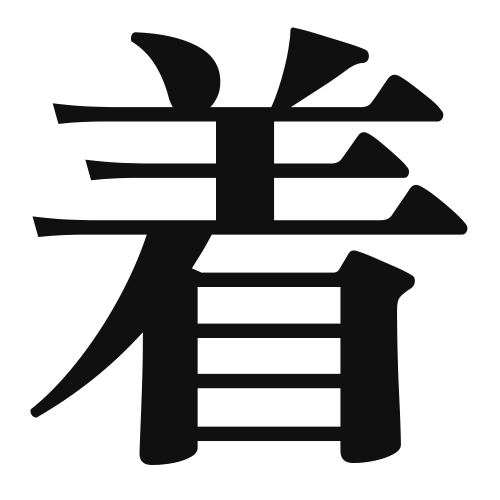1. Overview of Meaning
The kanji “着” (pronounced “chaku” or “ki”) primarily means “to wear” or “to arrive.” It is commonly used in contexts related to clothing and arrival at a destination.
2. Formation and Radical
Formation of the Kanji: The kanji “着” is a compound character that combines elements to convey its meaning. It consists of the radical for “clothing” (衣) and the phonetic component (者), which helps indicate its pronunciation.
Radical: The radical of “着” is 衣 (koromo), which relates to clothing and garments.
3. Examples of Usage
Common Words and Phrases: Some frequently used words that include “着” are:
- 着る (kiru) – to wear
- 着物 (kimono) – traditional Japanese clothing
- 到着 (touchaku) – arrival
Example Sentences in Daily Conversation:
- 今日は新しい服を着ています。 (Kyou wa atarashii fuku o kiteimasu.) – I am wearing new clothes today.
- 彼は午後3時に到着します。 (Kare wa gogo san-ji ni touchaku shimasu.) – He will arrive at 3 PM.
4. Synonyms and Antonyms
Similar Kanji: A similar kanji is “装” (sou), which means “to dress” or “to adorn,” but it emphasizes the act of dressing up or decorating rather than simply wearing.
Opposite Kanji: An antonym is “脱” (datsu), which means “to take off” or “to undress.”
5. Cultural and Historical Background
Relation to Japanese Culture: The kanji “着” is deeply rooted in Japanese culture, especially in the context of traditional clothing like kimono. It reflects the importance of attire in Japanese society.
Proverbs and Idioms: One common expression is “着るものがない” (kiru mono ga nai), which means “there’s nothing to wear,” often used humorously to express a wardrobe dilemma.
